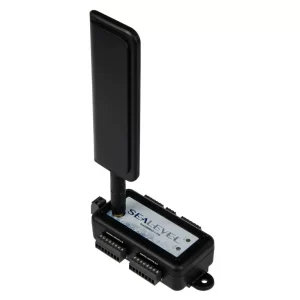Retrofitting Military Containerized Solutions for IoT Operations
Overview
A military contractor reached out to Sealevel for help retrofitting containerized installations and portable generator stations with IIoT. Part of temporary camps, these facilities are deployed in operations such as disaster relief. A primary containerized installation is the base kitchen, which runs standard kitchen equipment. Generators supply power to the camp and lighting.
During disaster relief deployments, most troops and personnel are dedicated to relief operations. The contractor wanted a cost-effective solution to track assets and monitor processes to reduce the burden on personnel. The company needed a smart device that could upgrade current equipment without requiring a new fleet. It needed to automate tasks, remotely monitor assets and log data in a cloud service. The device needed to be secure and use encrypted communication as well as operate on a local network.
Key Application Requirements
- Securely track assets via local networks
- Interface with military cloud programs
- Monitor cold chain and power supply data
- Automate systems for improved power efficiency
The Sealevel Solution
 Sealevel engineers provided a client-labeled SeaConnect 370 solution. Using a state of the art chip component, this iteration of the 370 uses secure certification storage, a Trusted Platform Module (TPM), SAS tokens for device/host authorization, and encrypted storage. The connection between it and the cloud uses AES 256-bit encryption. Digital signing prevents alternate applications from being installed or executed by the device, and the JTAG debugger can be disabled to prevent reprogramming. Short of being powered off, the device is secure physically and free from interruption.
Sealevel engineers provided a client-labeled SeaConnect 370 solution. Using a state of the art chip component, this iteration of the 370 uses secure certification storage, a Trusted Platform Module (TPM), SAS tokens for device/host authorization, and encrypted storage. The connection between it and the cloud uses AES 256-bit encryption. Digital signing prevents alternate applications from being installed or executed by the device, and the JTAG debugger can be disabled to prevent reprogramming. Short of being powered off, the device is secure physically and free from interruption.
One 370 was installed in each containerized kitchen with several wired 1-Wire temperature sensors to log the cold-chain data of the fridges. When the sensors detect temperatures outside the accepted limits, a text notification is sent to a facility personnel who can correct the issue. It also measures the volume of the mineral oil used to heat the systems. If the volume drops dramatically, it can notify managers of a potential leak.
Another 370 was installed in each generator station. The devices monitor and record power supply usage using voltage sensors. They also switch on/off the lights, based on preset intervals, such as every 10 hours or when dusk and dawn fall. Transmitting the generator’s voltage data to the cloud, historical analysis can be used to predict generator outages. This predictive maintenance feature prevents generator blowouts.
The Result
This solution resulted in decreased foodborne illnesses and lowered supply chain costs for food resources. It also diminished generator downtime and optimized energy usage, lowering costs and decreasing the labor burden.